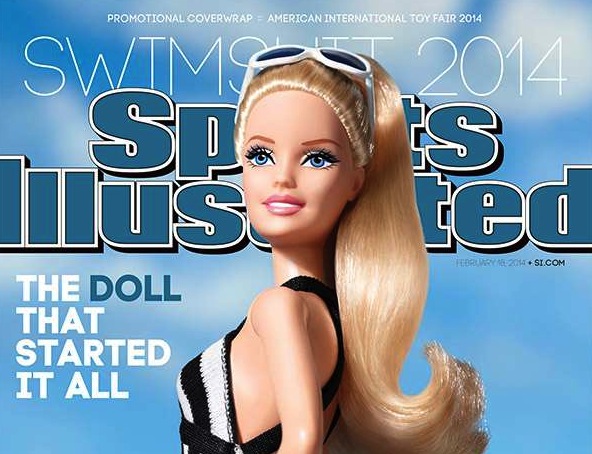If any group should applaud Barbie’s appearance on the cover of Sports Illustrated’s Swimsuit issue, it is the AARP. Barbie is 55 years old, an age once considered past a woman’s prime. Yet the most sexist louts on earth have chosen to brand her ancient, half-clad plastic as “hot.”
Technically, I suppose, Barbie is not a woman, but a woman-like thing — which doesn’t, in my view, make her different from the other heavily photoshopped human-like things on display in Sports Illustrated. I cringed when I read that Kate Upton, notorious SI model, had been photographed for the same issue during a so-called zero-gravity flight sponsored by a private company. This is environmentally shameful. Why squander expensive jet fuel to fly in parabolas when all an art director has to do is photoshop the model in some degrading simulation of microgravity?
You might also like: Is Carrie the best anti-bullying PSA ever?
Nor did the stunt seem original. About 10 years ago, I took a NASA-sponsored zero-gravity flight with some students from the San Francisco Art Institute. It was lots of fun, mostly because the NASA flight docs plied us with Scop-Dex, scopolamine cut with dexadrine, to prevent nausea. With that divine drug, I could have rolled around on my living-room floor and had an equally euphoric time. I wondered though, if someone from Sports Illustrated had been on our flight, since one of the student projects involved videotaping a Barbie doll floating in the cabin.
Mattel’s hashtag for the magazine cover is #unapologetic. But why would anyone apologize? Ten years away from Medicare and still shame-able as a slut? That is unambiguously awesome.
You might also like: Learn to cook with Bikini Kitchen
Marketing pundits may say that Barbie’s magazine appearance reflects the changing market for the doll. Fifty-five years ago, she was a revolutionary toy, knocked off from a German hooker doll originally sold to adult men. Her invented persona had to be squeaky clean in order for a toy company to peddle her to kids.
Over time, however, she evolved from a revolutionary toy to a traditional toy. The first generation of Barbie owners gave her to their daughters. Then those daughters gave her to their daughters. Her once-haughty expression (lifted from the German hooker doll) was tamed by focus groups into a broad, stupid grin. Such grins, critic Paul Fussell has pointed out in his excellent book, Class, usually indicate a plunge in social status and IQ.
Today, Barbie has almost shed her “toy” identity entirely. She is an artifact of mid-20th Century camp — a joke about the body parts that straight men have historically drooled over. She is a glorious parody of femininity. A little drag queen. A post-menopausal woman thumbing her nose at derogatory stereotypes of aging. For that, I admire her. #unapologetically.
You might also like: Shocking nude magazine covers
M.G. Lord is the author of FOREVER BARBIE: THE UNAUTHORIZED BIOGRAPHY OF A REAL DOLL, which is celebrating its 20th anniversary in print. She teaches memoir, cultural criticism, and science-writing at the University of Southern California.
Listen to NPR News on FilmOn:
Follow TV Mix on Twitter: @tvmixusa
Contact TV Mix: editors@tvmix.com
SOURCE: TVMix.com


